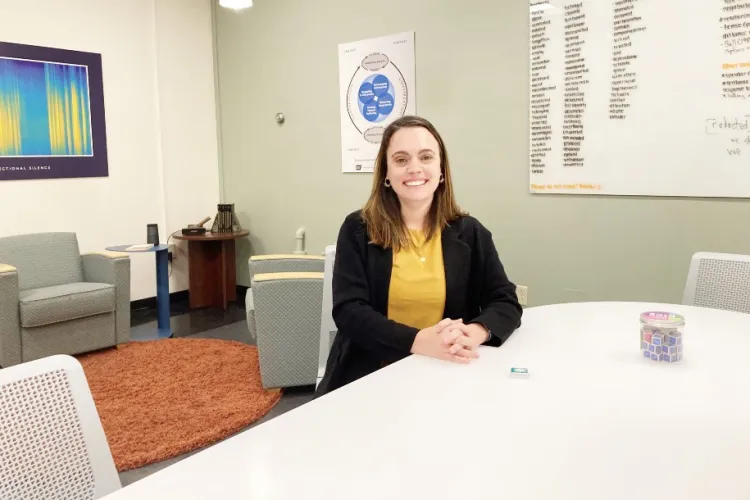As a palliative care nurse practitioner who regularly treated patients in advanced stages of cancer and heart failure, Elise Tarbi was clinically prepared to navigate conversations on sensitive topics. She was trained to get to know a person, help them understand their illness, and navigate treatment options.
But she soon found that questions on topics not covered in her training often came up in her talks with patients - questions like ‘Why is this happening to me?’ and ‘How am I supposed to talk to my family about only having a short time left to live?’
“Patients told me that cancer opened up their heart and that they had a renewed appreciation for life,” Tarbi recalls. “They asked questions that really tapped into existence, what it means to be human, and how we navigate life and living with the knowledge of dying.”
These experiences drove Tarbi to consider how clinicians can be best prepared to facilitate meaningful conversations with patients as they navigate serious illnesses and the end of life. She wanted to know how to help her patients, and their families, truly feel heard in the clinical environment during some of the most challenging and emotional experiences of their lives.
Tarbi left her position on the palliative care team at UVM Medical Center to pursue doctoral training at the University of Pennsylvania. For her dissertation, she hand-coded 45 conversations to analyze how people talk about existential experience in conversation. Then she took a post-doc position at Dana-Farber Cancer Institute to learn more.
Now, she’s back at the University of Vermont as an assistant professor in the Department of Nursing, teaching undergraduate nursing students and continuing her research in The Vermont Conversation Lab.

Led by palliative care physician Robert Gramling, the Vermont Conversation Lab’s multi-disciplinary team is dedicated to understanding and promoting human connection among those touched by serious illness. The lab is equipped to analyze conversations through artificial intelligence that builds models based on sample data to make predictions and offers an efficient, scalable approach to measure multiple elements of conversation across different contexts.
Tarbi’s current focus is on telehealth palliative care, which has become more prevalent amid the circumstances of the pandemic. Her goal is to understand what high-quality conversation looks like virtually, because it can be different than in person.
“I think we've all experienced that in the pandemic, what you're doing doesn't necessarily translate on the screen,” said Tarbi. “That's especially true when someone has advanced illness, and they don't have as much time or energy for conversation. You really need to try and think about how it’s possible to deliver high quality care via telehealth to a person who may have a lot of competing needs.”
Tarbi recorded the natural conversations between people with advanced cancer and their loved ones and palliative care clinicians via telehealth. She’s analyzing these recordings to explore the influence of spoken words, facial expressions, and emotions on creating connection in conversation.
From her seat at a table in the center of the lab, Tarbi gestures to a framed print on the wall behind her, of yellow peaks spanning a bright blue background. Tarbi explains that what at first glance appears to be abstract art is actually a display of data from a project that measured silences in conversation. The project is related to her own efforts.
“Can we know that silence is important in conversation?” Tarbi asks. “And then can we say if a conversation has more moments of connection or silence, does that help us achieve outcomes that we care about?”
Ultimately, Tarbi’s study findings will help support an understanding of high-quality communication in the telehealth context and support clinicians in developing strong connections with their patients.
“One of the big questions that I'm asking is how clinicians and patients work together to foster connection,” said Tarbi. “I'm looking for patterns. Conversation measurement is the fulcrum of understanding quality, and then changing that quality.”
Tarbi sees her work progressing to measure conversations over time in order to gain a clearer picture of how the patient-provider relationship shapes the trajectory of the conversation of care.
“If we could measure conversations in real-time and give feedback in the moment, then we can improve a clinician’s communication quality in a one-on-one encounter.”
Tarbi received an Express grant from the UVM Office of the Vice President for Research for her project Measuring Human Connection During Telepalliative Care Conversations: Integrating Multiple Channels of Communication.
